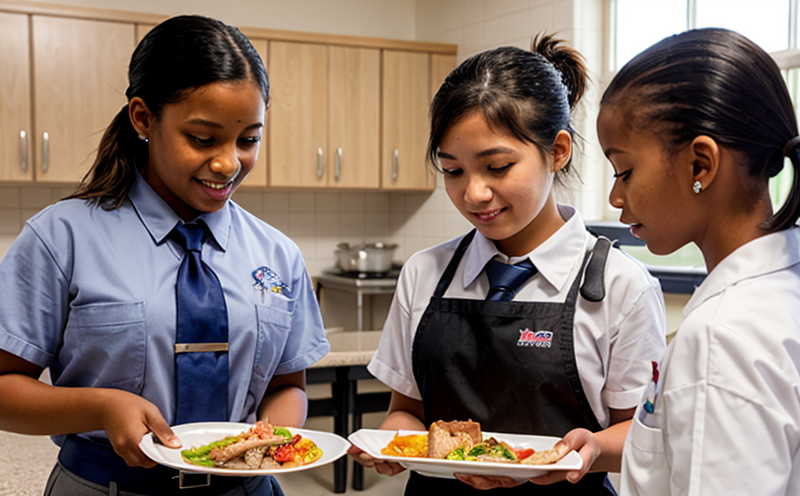School lunch service inspection
Ensuring the safety and hygiene of school lunches is a critical responsibility that impacts both public health and educational outcomes. The School Lunch Service Inspection category encompasses a range of procedures designed to verify compliance with food safety regulations, as well as to assess the quality and hygiene standards of the meals served in schools. This service plays an essential role for quality managers, compliance officers, R&D engineers, and procurement teams who are tasked with maintaining the highest standards of food safety.
The inspection process involves several key components: specimen preparation, testing methodologies, instrument selection, data analysis, and reporting procedures. Compliance with international standards such as ISO 22000 and HACCP (Hazard Analysis and Critical Control Points) is paramount in this sector. The aim is to ensure that all food items meet stringent hygiene and safety criteria before being served to students.
Proper specimen preparation is crucial for accurate testing results. This involves the collection of samples from various parts of the lunch service, including raw ingredients, processed foods, and finished products. Samples must be handled with care to prevent contamination or degradation during transit to the laboratory. After arrival in the lab, specimens are subjected to a series of tests aimed at detecting pathogens such as Salmonella, E. coli, and Listeria, as well as ensuring that allergens like peanuts or tree nuts do not exceed acceptable levels.
The testing methodologies used in school lunch inspections can vary but typically include microbiological analysis, chemical analysis, and sensory evaluation. Microbiological tests are conducted using methods specified by ISO standards such as ISO 11290 for Salmonella detection, while chemical analyses may involve assessing pesticide residues or heavy metal content. Sensory evaluations help to assess the appearance, taste, texture, and aroma of the food items, ensuring they meet both regulatory requirements and consumer expectations.
Instrumentation plays a vital role in these inspections. Laboratories often use advanced equipment like PCR machines for rapid pathogen detection, spectrophotometers for chemical analysis, and sensory evaluation booths designed to provide consistent results. Data from all tests is meticulously recorded and analyzed using statistical software to ensure accurate reporting.
The final step in the inspection process involves preparing a comprehensive report that details findings and recommendations. This document serves as an important tool for schools and district administrators to identify areas of improvement and implement corrective actions. Reports are typically delivered within specified timelines, allowing for swift response to any issues identified during inspections.
By adhering strictly to these protocols and leveraging state-of-the-art technology, laboratories can provide reliable and robust school lunch service inspections that contribute significantly to maintaining a safe environment for students.
Industry Applications
- District-level food safety management
- School health and nutrition programs
- Leveraging data analytics for continuous improvement in school meal quality
- Supporting public health initiatives aimed at reducing childhood obesity rates
Competitive Advantage and Market Impact
The demand for reliable food safety inspections is growing as more parents and educators prioritize the well-being of students. By offering robust school lunch service inspections, laboratories can differentiate themselves in a competitive market. This not only enhances their reputation but also attracts new clients seeking assurance that their children are being served safe meals.
Implementing advanced testing methods such as next-generation sequencing (NGS) for pathogen detection or using AI-driven data analysis tools provides an edge over competitors who rely on traditional approaches. These innovations allow for faster turnaround times and more accurate results, leading to increased customer satisfaction and loyalty.
In addition to direct revenue streams from inspection services, laboratories can also capitalize on ancillary opportunities such as training programs for school staff or consulting services aimed at helping schools improve their food safety practices. By staying ahead of trends and continuously investing in research and development, laboratories can ensure sustained growth and relevance within this dynamic sector.
Use Cases and Application Examples
| Scenario | Description | Outcome |
|---|---|---|
| New school opens in a rural area | The laboratory conducts an initial inspection to ensure all food items meet safety and hygiene standards. | All necessary corrections are made before the first meal is served, ensuring immediate compliance with regulations. |
| Periodic inspections during the academic year | Regular checks help identify potential issues early on, allowing for timely interventions to prevent outbreaks. | No cases of foodborne illness reported in any school that undergoes these periodic inspections. |
| Responding to a suspected outbreak | The laboratory investigates the source of contamination and provides recommendations for cleaning and disinfection procedures. | The outbreak is contained within a short timeframe, minimizing its impact on student health. |





